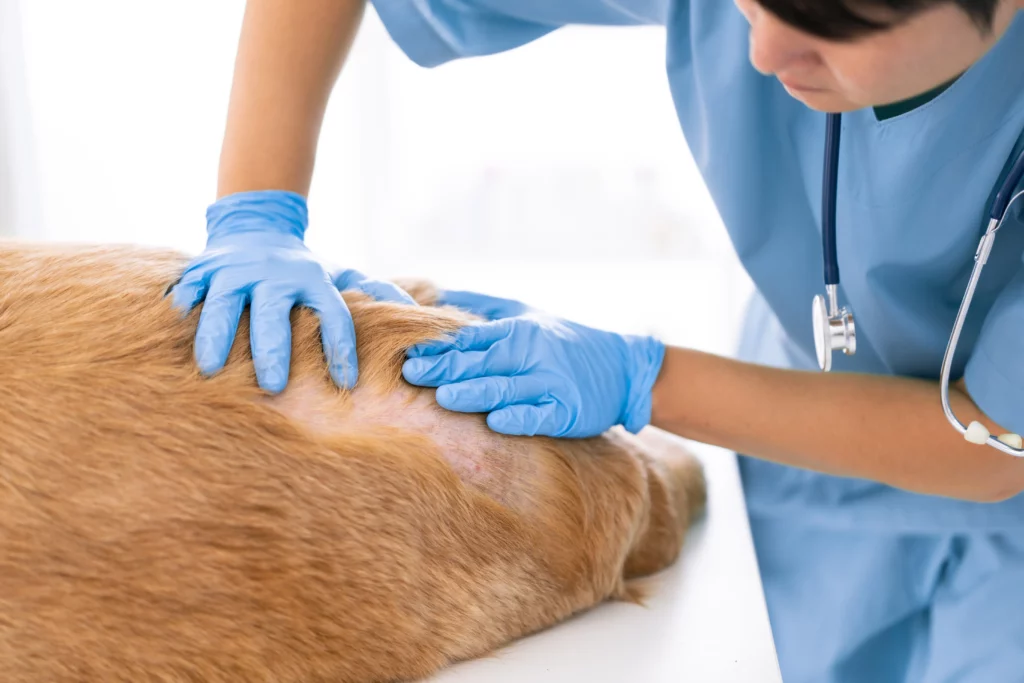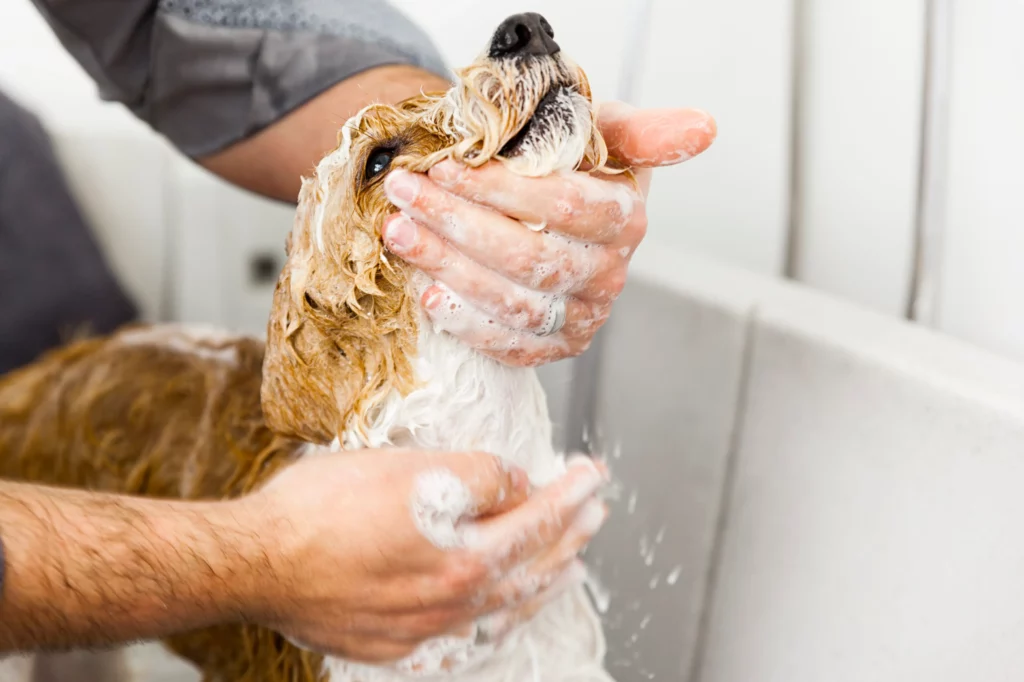The name may be misleading, but ringworm in dogs isn’t parasites roaming inside. Ringworm in dogs indicates a fungus. It gets its name for its appearance; circular, raised, itchy rash.
Having a pet with ringworm can bring discomfort to them and yourself. Ringworms are common in cats and dogs, but humans can get infected as well. It is a fungus that knows no limits and doesn’t discriminate against species.
Continue reading this session to protect your dear pets and family from an uncomfortable experience.

It is a fungus that consumes dead hair or dead skin cells. Not to be confused with tick bites or Lyme disease. Its scientific name is dermatophytes; it is a collection of pathogenic fungi.
Contamination of ringworms in dogs can occur by the following:
Contagion occurs after direct contact with an infected specie or object; combs, food bowls, and anything with your dog could mingle. If you are an animal lover with a cat friend and dog buddy, these can interchange infection; cat to a dog, dog to a human, and vice versa.
If your family extends to having livestock, it is also an easy target for fungus. Continue to read and know the risk of spreading ringworm to other pets or families.
Certain areas are more prone to ringworm infection, which are the legs, face, ears, and feet.

Certain dogs may not show any symptoms. If your pal is a pup or an old wise champion, then chances are their immune system is weak; targets for ringworms.
Genetics may factor in for dog breeds; some Terriers are more inclined to get infected by ringworm than other breeds. If your dog has a skin condition, it predisposes them to get contaminated. Skin is a protective barrier, but open wounds, unhealed scratches, or chronic skin conditions make them vulnerable.
After exposure, it can take about 1 to 3 weeks for lesions to appear; spores attach to damaged skin.
Seek a veterinarian to perform a diagnostic test and a physical examination. It’s the first step to properly treating your best friend. Samples of hair or skin cells for fungal culture or use a Wood’s lamp - a special ultraviolet light to inspect the hair strands.
Factors that include the treatment are the severity, the number of pets in the household, and if there are children or immunocompromised adults in the home.
Test your other pets if you have more.
A cream, ointment, and a medicated shampoo will help treat and control the infection. It takes a couple of months to eliminate the ringworm, but it prevents further contamination of the environment.

Tough cases will require anti-fungal oral medications in conjunction with topical therapy.
Cleaning up your pet’s hair may sound complicated, but the spores in the hair follicles remain contagious for months. It may survive on the surface of anything your dog contacts; bedding, grooming tools, clothing, and furniture. It is vital to clean loose hair routinely until completing the treatment.
Shaving or trimming the fur around the ringworm in dogs reduces the risk of outbreaks. Do not attempt to do this yourself or based on your criteria. Ask your vet if it’s worth it. There are some dog breeds that fur won’t grow back or take too long to.
Not the best moment for your friend, but keeping them apart is for their safety and yours. If you have an area where you can isolate them, it will make battling ringworm easier. A minimum of Six weeks is tough to pull through but think of it as a temporary discomfort rather than a repetitive issue.
Do not self-diagnose your dog. Visit your veterinarian for proper treatment. The sooner you identify ringworms in your dog and seek help, your chances of catching it yourself lower.
Ringworms in dogs are common and spread readily from specie to specie or when in contact with contaminated objects. It feeds off dead hair or dead skin cells.
Its aspects and symptoms should be the first sign to get your pet tested, diagnosed, and treated for the infection. Species with a weaker immune system are the easy targets.

Talk to your veterinarian about using Aniviva to help your dog’s coat!
AniViva® offers a pet series with zinc-copper-magnesium-based skin conditioners and moisturizers. Learn more about AniViva® Pet Series.
It will enhance the health and beauty of their fur.



